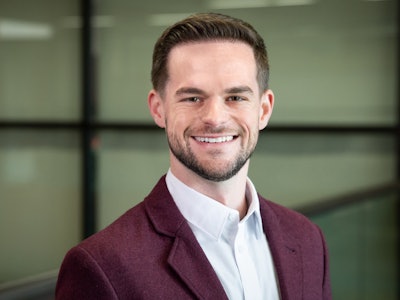For more than a million students each year, the college process starts with logging on to the Common App, the online application that can submitted to over 1,000 colleges and universities. But for about a quarter of those students, the process stops there: although they set up a student profile and begin working on at least one application, they ultimately don’t complete or submit any. Now, for the first time, this population of almost 300,000 is being studied, as researchers look for clues about how to get these students on to campuses.
“These folks have clearly shown some interest in college-going,” said Dr. Taylor Odle, an assistant professor of educational policy studies at the University of Wisconsin-Madison. “If you’re thinking about helping to equalize college enrollment, it may be easier to get them over the hurdle.”
 Dr. Taylor Odle, assistant professor of educational policy studies at the University of Wisconsin-Madison
Dr. Taylor Odle, assistant professor of educational policy studies at the University of Wisconsin-Madison
Non-submitters, Odle and Magouirk found, are no less ready for college than students who do apply. Their GPAs and standardized test scores are similar, as are their aspirations.
In terms of academic readiness, “non-submitters look just like submitters,” said Odle. “It’s not like this is a pool of students that’s ‘not college material,’ or couldn’t get into Common App institutions.”
However, the researchers found disparities in a variety of factors, including race and ethnicity, socioeconomic status, and education and career plans. Many of these disparities mirror gaps that show up later in enrollment and completion statistics.
Odle called the racial disparities “unfortunately unsurprising.” Non-submission rates were highest among Native American and Alaska Native students, as well as Native Hawaiians. Black and Hispanic students were overrepresented among non-submitters, and white students and Asians were underrepresented.
“This underscores that applying to college requires a lot of social or cultural capital,” said Odle, “and we know that, structurally, [minoritized] students don’t come to a college application on equal footing to other students. Small frictions in the process are likelier to be barriers for those students than others.”
Non-submitters tended to live in areas with lower educational attainment, lower median household income, and a higher incidence of childhood poverty than students who submitted applications. Non-submitters were also more likely to attend a Title I-eligible school and were less likely to have two parents who had earned a college degree.
However, some of the biggest differences were in the academic and career aspirations of students who did and didn’t submit. Students who were hoping to achieve an associate degree were nearly twice as likely to be non-submitters (41%) as students who wanted to earn a bachelor’s (22%). And students who dreamed of working in fields that require advanced education like engineering and medicine were more likely to complete applications than students who wanted careers that don’t require extra schooling, like cooking or farming.
According to Dr. Daniel Klasik, an associate professor at the University of North Carolina at Chapel Hill School of Education, some of this can be chalked up to students signing for the Common App and realizing that it is not as necessary for achieving their goals as they had thought. But Odle still finds the stats problematic, adding that it shows students missing out on opportunities to get better financial aid and to earn more regardless of their chosen field.
The researchers also found factors that strongly predicted whether a student ultimately does not submit an application. The most striking had to do with the essay: only 43% of students who didn’t write at least 100 characters for their essay ultimately applied, compared with 94% of the students who wrote that much or more.
 Dr. Daniel Klasik, associate professor at the University of North Carolina at Chapel Hill School of Education
Dr. Daniel Klasik, associate professor at the University of North Carolina at Chapel Hill School of Education
Since the essay can be a barrier, Odle believes that it is a critical area in which to offer additional support. He wondered whether the Common App could add online modules, virtual coaching, or example essays to help students. The Common App currently has a resource that helps students work through each essay prompt, including topics for students to think about and questions for them to ask themselves.
In recent years, the Common App had tried targeting students with text-based nudges to encourage them to finish their applications, but found that it was not very impactful. Dr. Mark Freeman, the Common App’s vice president of data analytics and research, said that the non-profit is currently focused more on engaging students who do not sign up to the platform at all, but pointed to several initiatives that might encourage people who start applications to complete them, including expanding its direct admissions program, in which qualifying students get automatic acceptance to certain colleges, and increasing the number of MSIs that participate.
Odle hopes that his and Magouirk’s research inspires future work to uncover exactly why these students don’t submit applications and the best ways to help them finish.
“The access challenge starts very early,” he said. “If there are inequalities in application rates, then you can’t have equal enrollment rates, and you can’t have equal completion rates.”
Jon Edelman can be reached at [email protected]


















